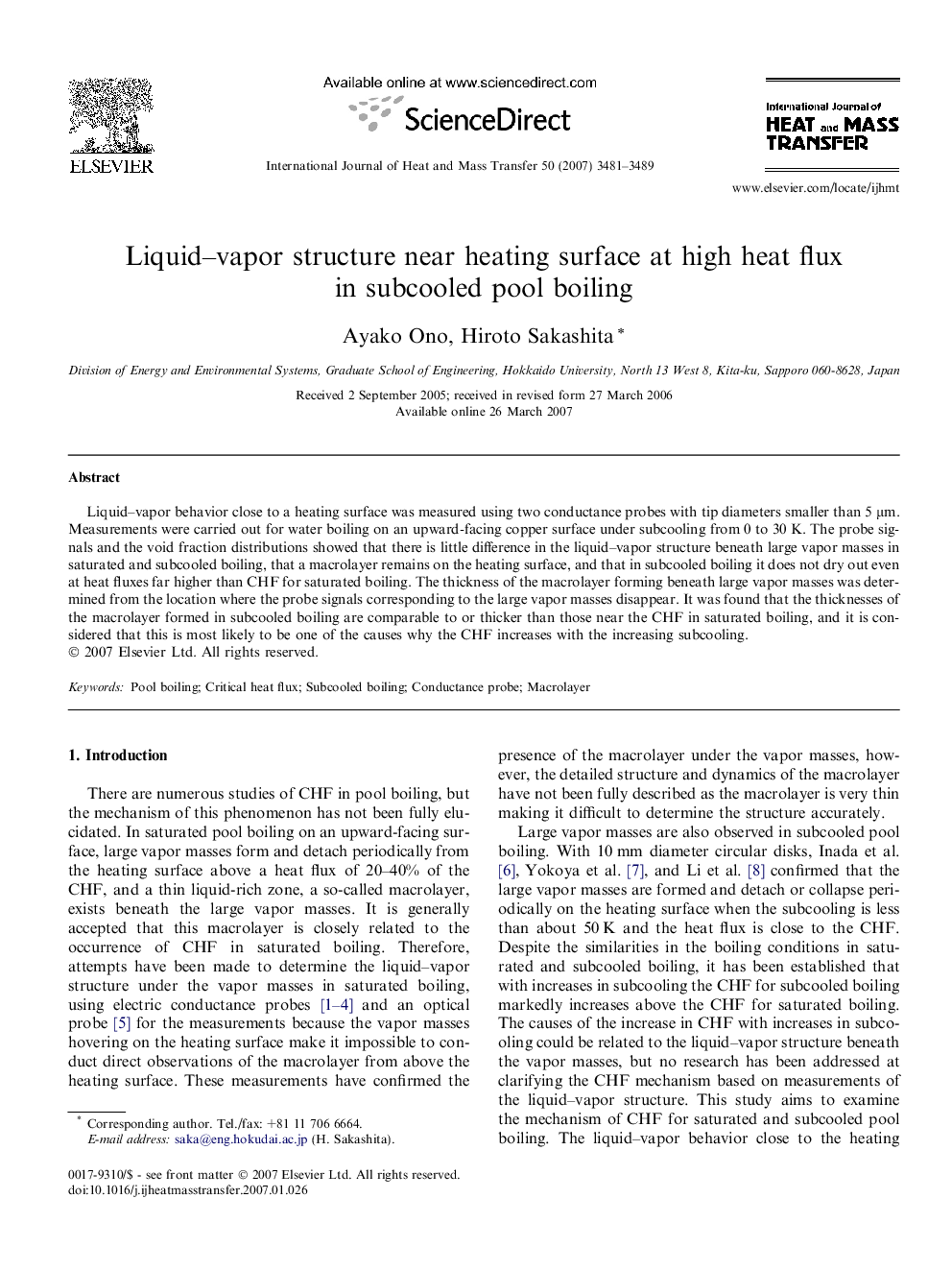| Article ID | Journal | Published Year | Pages | File Type |
|---|---|---|---|---|
| 661271 | International Journal of Heat and Mass Transfer | 2007 | 9 Pages |
Liquid–vapor behavior close to a heating surface was measured using two conductance probes with tip diameters smaller than 5 μm. Measurements were carried out for water boiling on an upward-facing copper surface under subcooling from 0 to 30 K. The probe signals and the void fraction distributions showed that there is little difference in the liquid–vapor structure beneath large vapor masses in saturated and subcooled boiling, that a macrolayer remains on the heating surface, and that in subcooled boiling it does not dry out even at heat fluxes far higher than CHF for saturated boiling. The thickness of the macrolayer forming beneath large vapor masses was determined from the location where the probe signals corresponding to the large vapor masses disappear. It was found that the thicknesses of the macrolayer formed in subcooled boiling are comparable to or thicker than those near the CHF in saturated boiling, and it is considered that this is most likely to be one of the causes why the CHF increases with the increasing subcooling.
